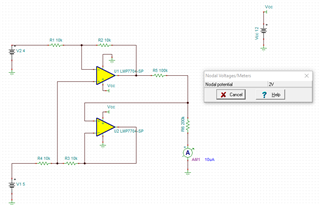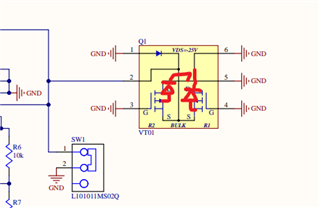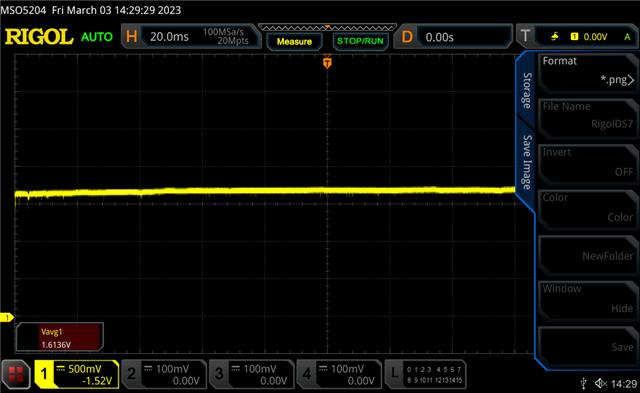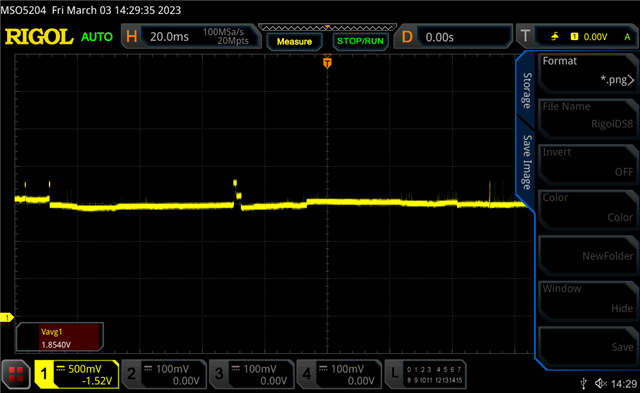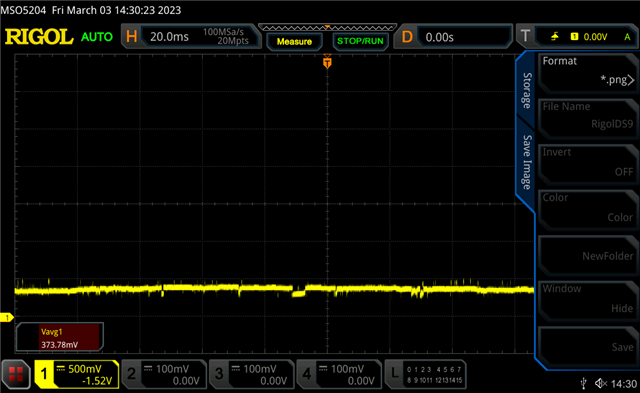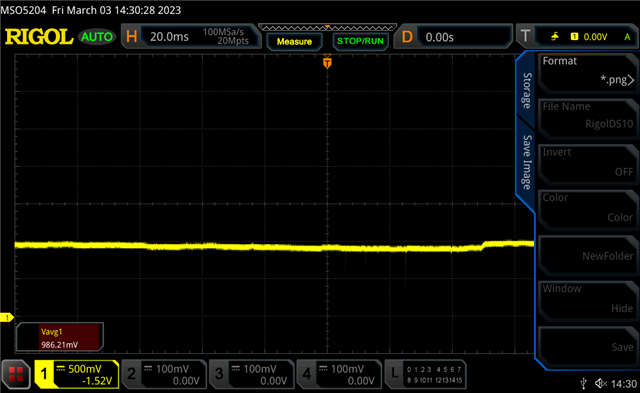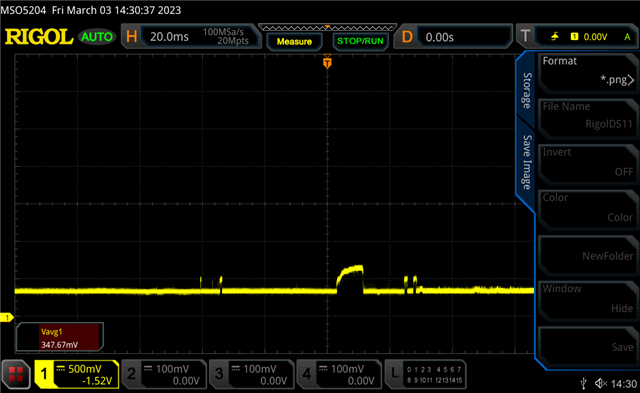Greetings,
Attached is a schematic for a radiation sensing circuit. The circuit uses the LMP7704 as a 10uA current source. The design was created using the current source reference circuit in the LMP7704 datasheet. The 10uA source is fed to the radiation sensor per the rad sensor design specs. The rad sensor is a varadis RADFET VT01. There is some resistance across the RADFET which will create a voltage. That voltage is fed into a unity gain buffer to isolate the 10uA current source from the resistor divider.
With that being said the circuit does not work as expected. To test just the current source, I removed the RADFET and placed a 200k resistor between the VCCS net and ground. I would expect the VCCS net to be 2V if the circuit were working properly (200k ohm * 10uA). During this I also left the switch in the open position as to not short VCCS to ground.
I've also attached oscilloscope captures of VCCS. Is there anything you can comment on in regards to the current source design?
Thank you,
Derrick
PS. Please let me know if this link does not work. Not sure of the cleanest way to add pictures.


